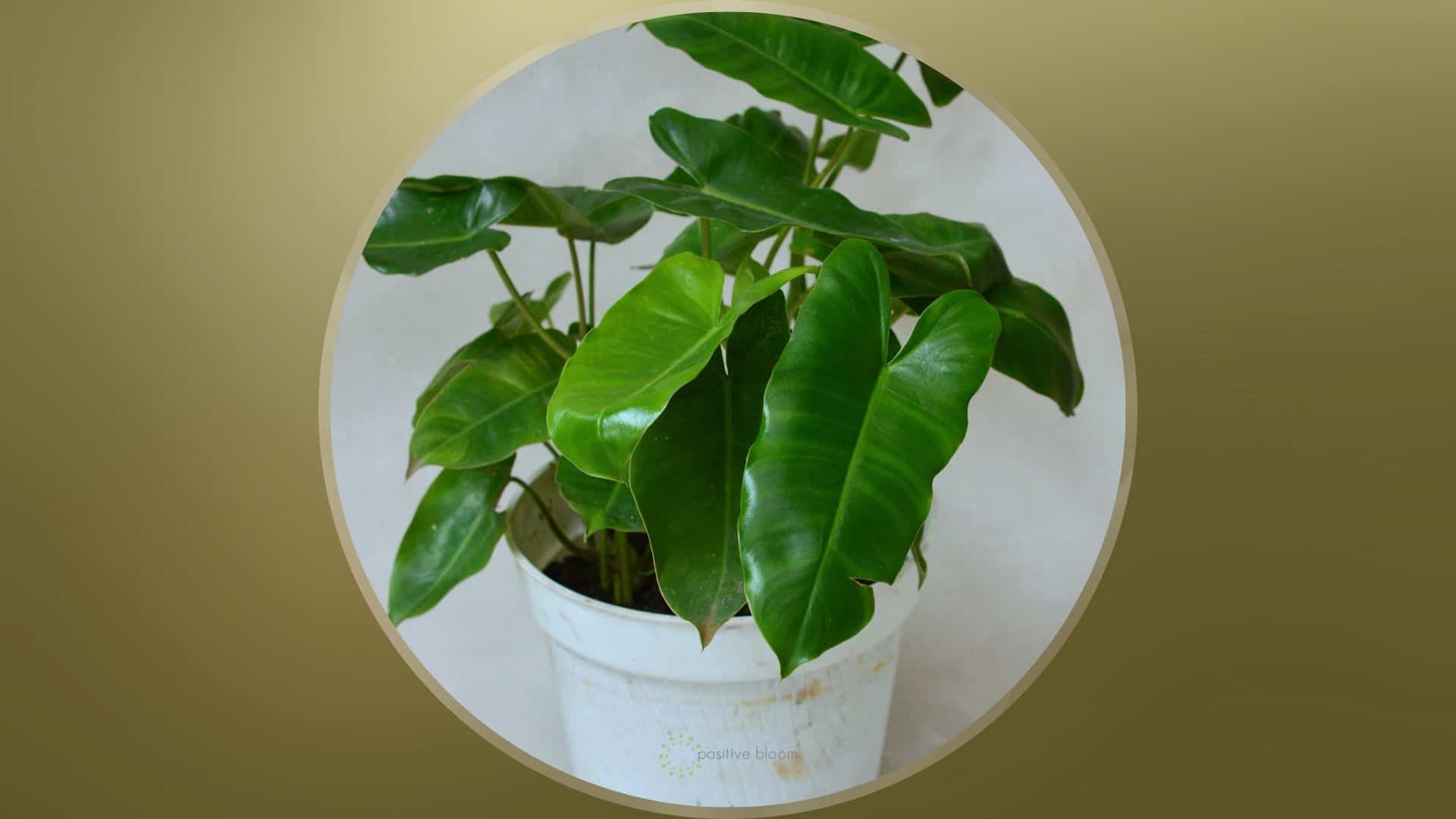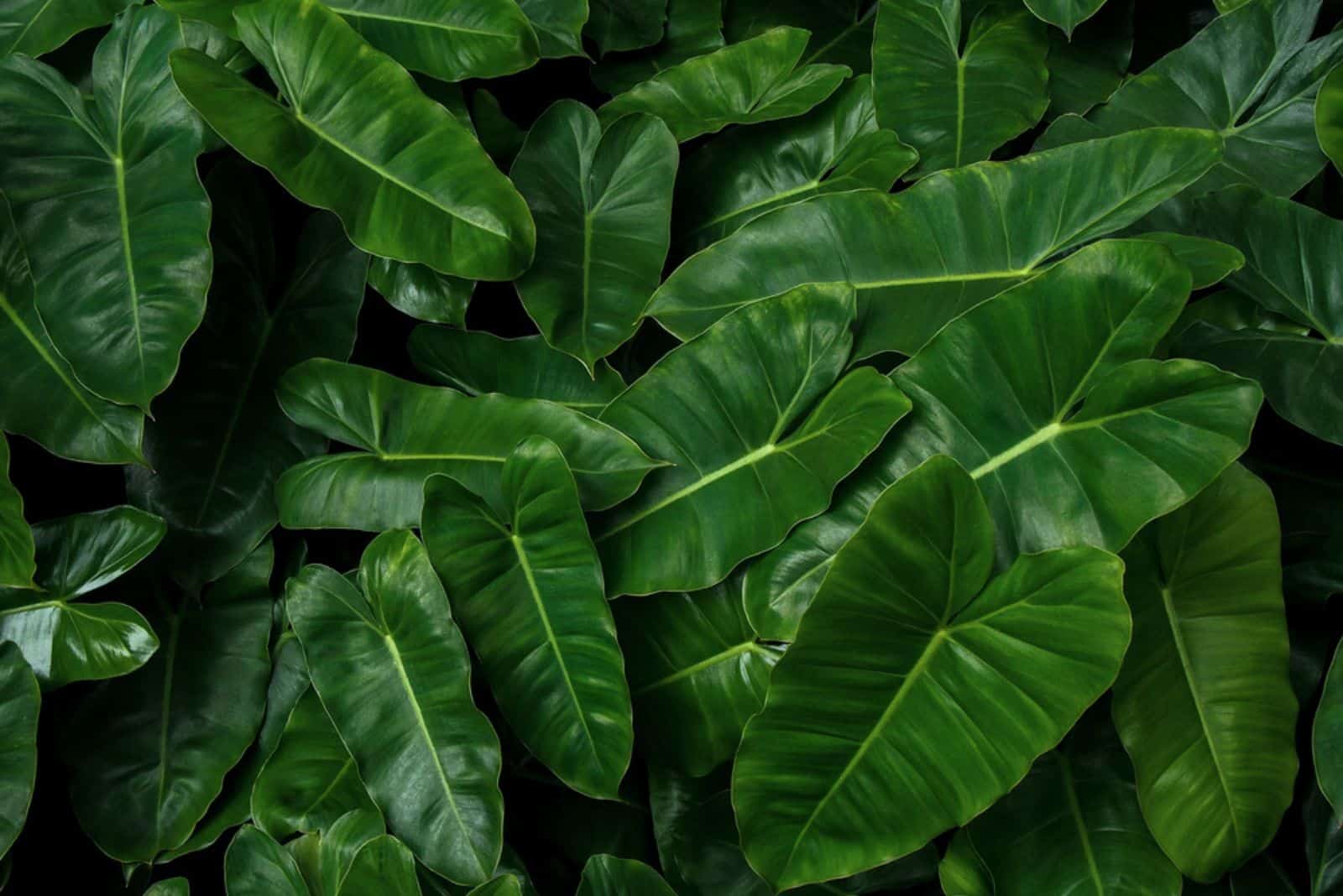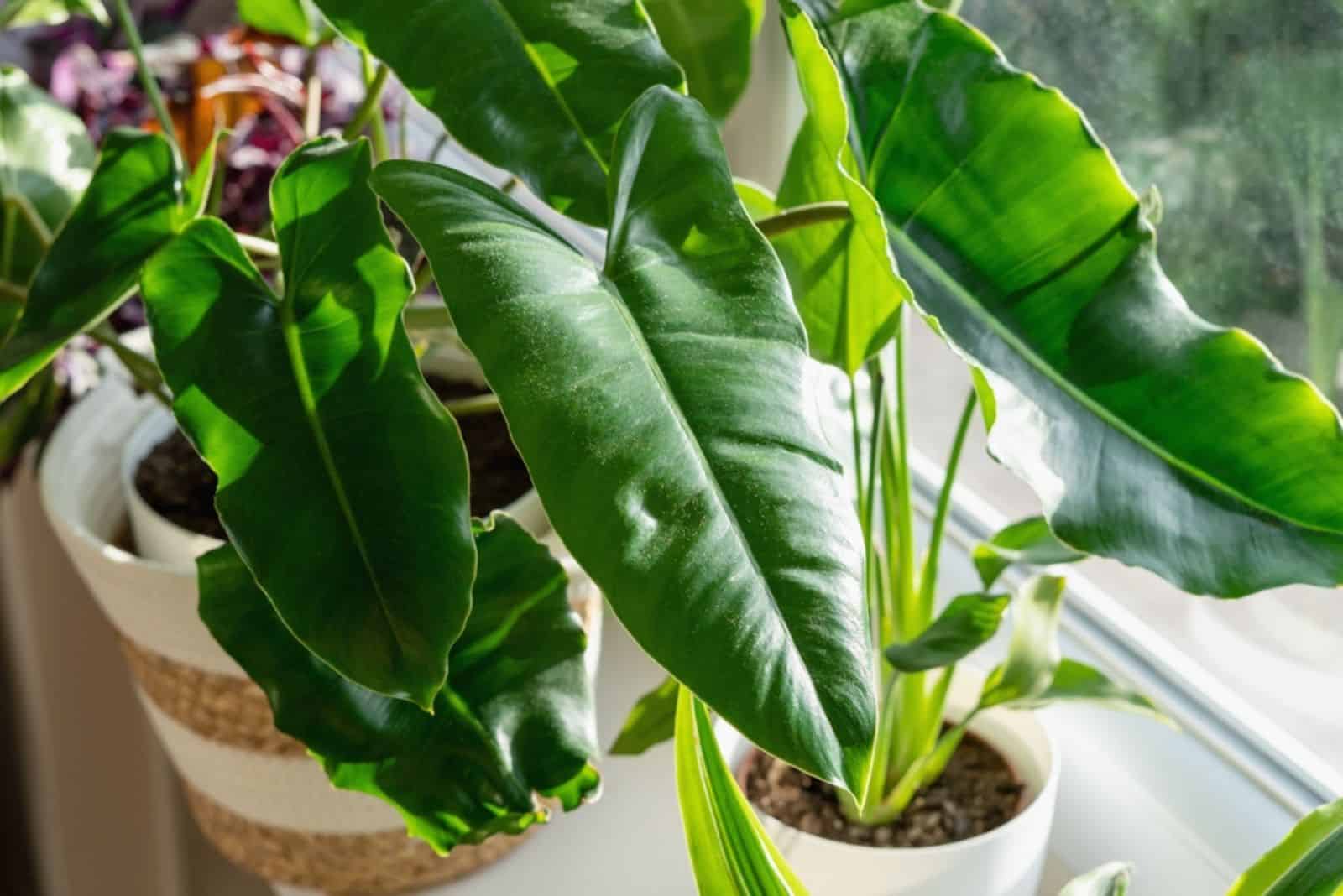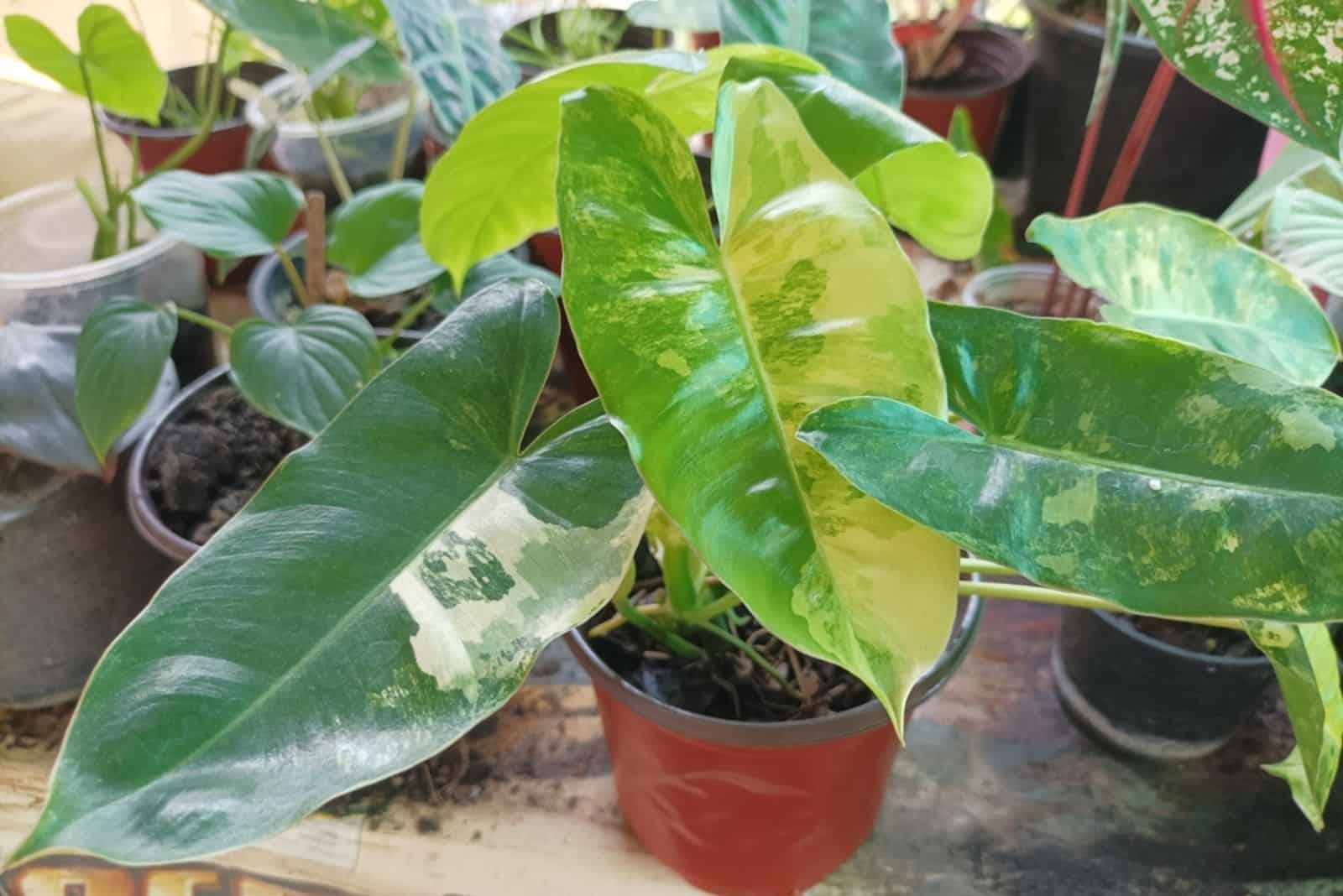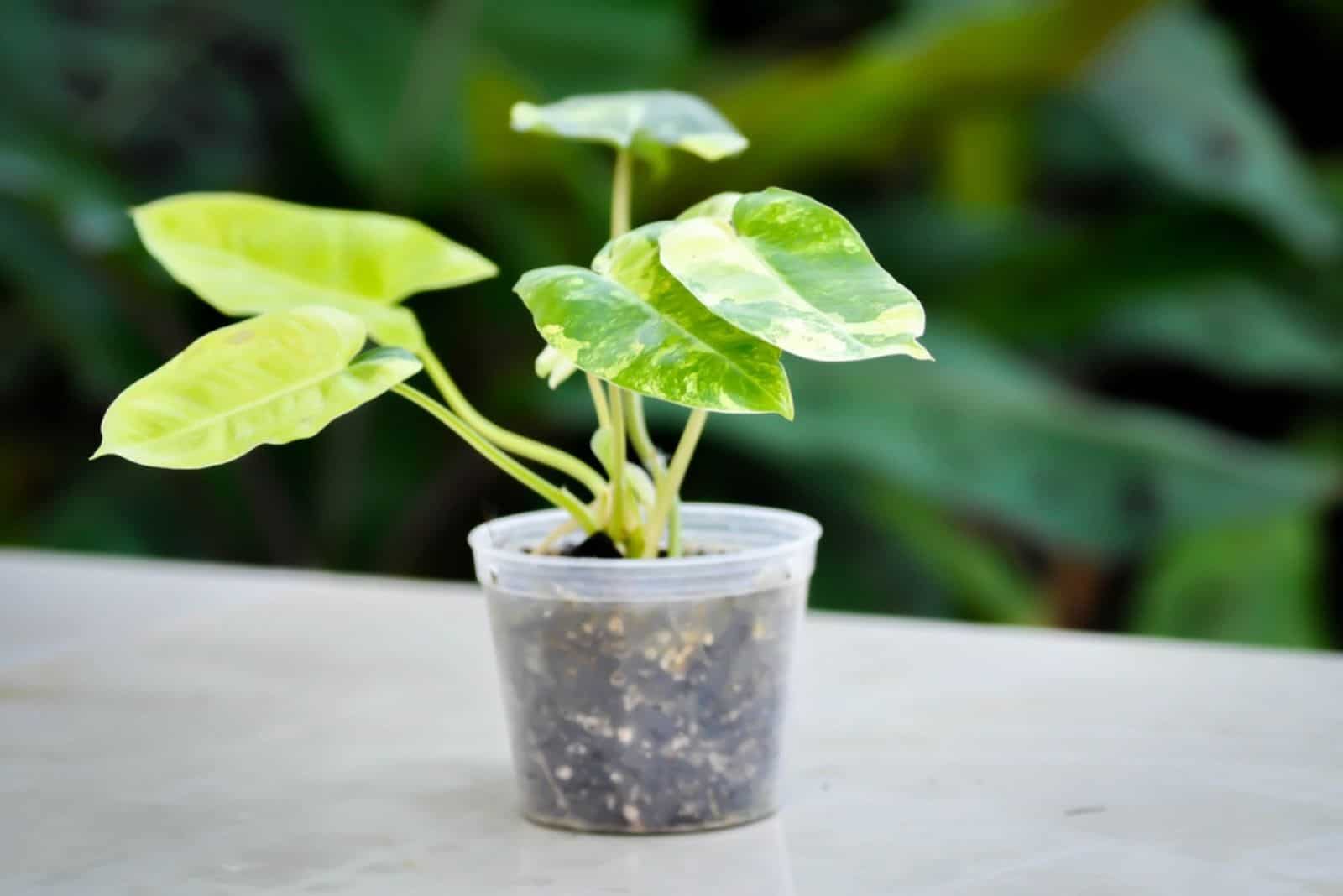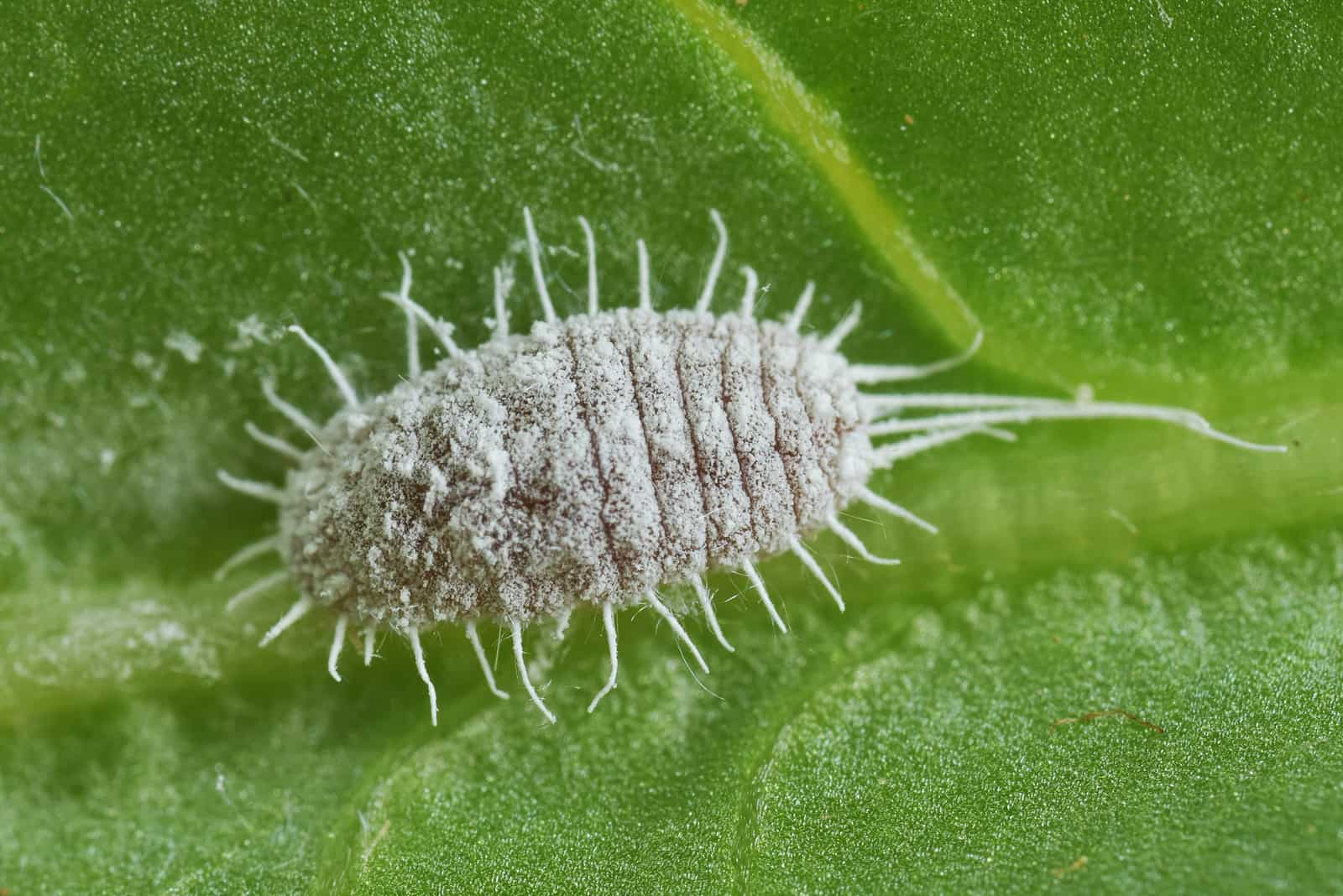If you are looking for a tropical plant that will spruce up your space and make it look more lively, then I suggest the Philodendron Burle Marx. Not only is this houseplant absolutely gorgeous, but it is also beginner-friendly due to its relatively easy plant care guide.
If you already have a healthy Philodendron, you won’t have any issues with the Philodendron Burle Marx, especially since it is more hardy than many other Philodendron varieties.
This little climber produces dark green, glossy, heart-shaped leaves that are simply breathtaking!
If you want to know more about this lovely Philo, and also learn how to take care of it, stay tuned.
Philodendron Burle Marx: Common Features
The Philodendron Burle Marx, scientifically known as the Philodendron Burle Marxii, is a trailing Philodendron variety named after a famous Brazilian architect called Roberto Burle Marx, who wanted to add native plants to landscaping.
Therefore, this lovely plant is native to Brazil.
It is an evergreen and fast-growing plant that will grow vigorously and spread if grown in proper conditions. However, it is a small popular houseplant that usually grows up to 2 feet tall and around 2-4 feet wide. Therefore, it can be grown in smaller spaces or even on shelves and desks.
This compact plant has an abundance of glossy leaves and is full of texture, with dark green, elongated, heart-shaped leaves linked to red-colored stems branching from one main vine. You can spot numerous aerial roots emerging from the vine — they use them to climb!
There is also a variegated version of this plant known as the Philodendron Burle Marx Fantasy, which produces green leaves with light green and creamy variegations all over the surface.
Growers usually grow this plant as a low-growing shrub, though you can provide it with something to climb on, such as a moss pole or some other alternative.
If you want to grow a Philodendron empire, then check out other similar varieties, such as Philodendron Mamei, Horsehead Philodendron, Philodendron Red Princess, and Philodendron Camposportoanum.
Philodendron Burle Marx Plant Care Guide
We mentioned that the Philodendron Burle Marx is a low-maintenance plant. All Philodendron plants are relatively easy to take care of, but this cultivar can tolerate mild drought and direct sunlight even more so than other varieties.
Now, let’s look at the Philodendron Burle Marx care guide in more detail.
Water Requirements
The watering regimen for this aroid varies based on the environment. I don’t want to scare you, but when you water it you need to be very careful! It is susceptible to root rot and sensitive to overwatering.
Three things that affect watering are the time of year, the local climate where you reside, and the growing conditions provided.
Let’s start by talking about the growing season. When the top two inches of the soil become dry throughout the plant’s growing season (spring and summer), water the plant to keep the soil moist. This is what you should do if you are growing an indoor plant.
On the other hand, if you are growing this plant outdoors, you should water it every two days. Reduce watering in the fall and winter because the plant isn’t actively growing at this time.
The climates mentioned above are warmer. If you reside in a region with a cooler climate, you should water your plants around twice a week during the growing season and as little as possible in the winter.
The soil is a crucial element in the irrigation schedule. If the soil drains effectively, which it should, you can arrange the watering schedule on your own. As an illustration, water the plant once per week for a while, then every ten days during the growing season.
This will help you determine the ideal watering schedule for your plant. Different circumstances are provided by each plant grower because they may reside in warmer or colder climates.
As well as well-draining soil, proper drainage is also ensured by growing the plant in a pot that has drainage holes in the bottom. This will help with draining the excess water that would otherwise remain and cause overwatering.
Reduce watering as soon as you observe yellow foliage or soggy soil — these are the earliest indications of overwatering that can lead to root rot if watering continues.
Even though this plant can tolerate some drought, don’t leave it thirsty for too long. Underwatering is also a problem, just like overwatering, but in this case your plant would stop growing altogether.
Light Requirements
An average of 70 to 85% of indirect sunlight is needed by this light-loving shrub in order for it to thrive and grow. On the other hand, direct sunlight might harm the plant and result in black scorch marks all over those lovely leaves!
Why is it the case? Because it is a native of rainforests, this plant spends its entire life protected from the sun under the canopy of the jungle.
I advise placing the plant close to a window that faces east. The plant will receive the light it requires throughout the day, as well as some morning sunlight (which it really enjoys). Put a curtain over the window if the plant is in a location where it receives direct sunlight for additional protection. The curtain will provide the plant with the perfect amount of sunlight and shade.
You can also put it near a north-facing window, where it will receive plenty of bright indirect light. This plant can tolerate some low light, but if kept in it for a long period, the Burle Marx will probably get leggy.
In case you decide to take the plant outside, you should do it gradually. To reduce stress, take the plant outside more frequently and lengthen the time it spends there. The plant should be adapted to the new environment for around two weeks.
If you’re growing the plant outside, choose a location with some shade or put it beneath a tree (if you have any).
Soil Requirements
There are a few features that you have to take into consideration when deciding what potting soil mix to use for your Philodendron Burle Marx. The soil needs to be well-draining (to get rid of excess water), porous and loose (to allow aeration), and nutrient-rich (so that the plant has enough nutrients to grow and develop!).
The roots of this tropical plant prefer moist soil, but also soil that doesn’t retain too much water because it grows on rocks and trees (it is a climber) in nature.
A soil-free potting mix is best because it doesn’t compact too much, holds onto water, and promotes airflow. For this kind of Philodendron, the ideal potting mixture should be made up of a quarter each of orchid bark, peat moss, coco coir, and perlite.
You can also use kitchen compost, leaf mulch, perlite, and peat; however, you should be careful because sandy or excessively damp soil will inhibit the roots from absorbing the nutrients.
For instance, you can buy a succulent mix and add some orchid bark or coconut husk.
All of the abovementioned mixtures will guarantee healthy growth and support your plant’s development.
Humidity Requirements
This is a plant that’s used to growing in tropical climates, so the Philodendron Burle Marx thrives in humid environments. It grows the best when humidity levels are around 80%, though it can also tolerate lower humidity levels of around 50%.
Therefore, keeping the humidity levels anywhere between these two recommended ranges is optimal for plants to grow normally. If you live in a relatively dry area or your home gets particularly dry, there are some ways that you can improve humidity.
Create your own pebble tray if you enjoy doing things yourself. Fill a tray with pebbles and water, then put your plant on top of it. Use a pebble tray with caution, however, as the bottom of the soil may become wet and lead to root rot.
You can also invest in a humidifier, which would probably be the easiest option.
However, if you don’t want to spend money, there are some free options that you can use besides creating a pebble tray. For instance, you can try misting your plant on a daily basis, but don’t forget the aerial roots as well!
Another free option is to group your plants — you can grow them together with Monsteras, Pothos, or other Philos so that they all benefit from circulating humidity.
Lastly, you can put your plant in a humid room like a bathroom or kitchen — however, make sure to put them in a good spot with plenty of light exposure.
Temperature Requirements
This Philodendron cultivar thrives in environments that are 65 to 80 degrees Fahrenheit. This plant is not resistant to frost or extremely hot temperatures.
The plant’s moisture levels will drop when temperatures exceed 86 degrees Fahrenheit, which will make it difficult for it to flourish. On the other hand, if the temperature falls below 55 degrees Fahrenheit, it could seriously impede the plant’s growth and lead to other issues.
Keep the plant away from radiators and other sources of heat.
Avoid planting this Philodendron close to windows or doors that frequently open and close since they hate temperature changes.
If you cultivate this plant outdoors, I advise bringing it inside over the winter, especially if your area has harsh winters.
Fertilizer Requirements
Fertilization can be done in two ways. The first method is organic and natural: simply add some organic matter to the soil to provide nutrients for the plant.
For instance, during the growing season you can dilute fish emulsion and apply it once a month.
Nitrogen should make up a considerable portion of any chemical fertilizer to encourage new growth, especially the leaves!
To get better results, use half the recommended strength of a universal fertilizer so as not to damage the plant. The ideal fertilizer is one that’s high in nitrogen. You can also use a slow-release fertilizer at the beginning of the growing season.
This plant enters a dormant stage during the colder months and doesn’t require fertilizer. Given that the plant cannot develop while in dormancy, it won’t promote growth. During the upcoming growing season, it will probably result in lanky growth.
Additionally, the soil’s moisture content is higher during the colder months, and believe me when I say that wet soil and fertilizer don’t mix well!
Pruning
Pruning this plant only needs to be done to get rid of the yellow or dead leaves. If your living room is small and the plant has gotten bushy and tall, this is another reason to prune it. Use the cuttings to propagate the plant if you have pruned a healthy stem cutting.
To avoid spreading infections, always remember to sanitize your pruning shears before using them. For sterilizing, ethanol or 70% isopropyl alcohol can be used.
When you clean your home, dust the plant’s leaves as well. Don’t forget to clean the plant when you do your chores.
Another option is a gentle sponge. Rub the leaves lightly after dipping them in water. This technique also keeps pests at bay.
Repotting
This plant grows quickly, so it needs to be replanted more frequently than other typical indoor plants. I advise repotting it once a year or twice a year.
Repot your Philodendron into a larger pot if you see aerial roots poking out of the drainage holes.
Repotting should be done in the growing season (spring or summer).
To repot the plant, follow these three steps:
1. Carefully remove your plant from its container.
2. Loosen the roots’ knots by shaking off the soil around them.
3. Put the plant in a fresh pot that’s two inches larger than the old one. When this plant is fully grown, it will be heavy and tall, so I suggest asking a friend for assistance.
I use a ceramic or terracotta pot since they promote rapid water evaporation. If you want to grow your plant in such pots, you’ll probably need to water it more frequently.
A plastic pot will also work just fine. Plastic pots are used for tiny plants since water evaporates more slowly in them.
Propagation
Propagation of this philodendron is very simple. I’d like to briefly highlight a few things that are essential for effective propagation before I demonstrate two different propagation methods.
The Burle Marx generates aerial roots in its nodes, which makes it simple to spread the plant. Although the seeds are sold in certain plant shops, I wouldn’t rely on them too much.
I also advise against adding rooting hormones because, if the correct circumstances are maintained after the process, propagation already has a very good probability of success.
To improve your chances of success, propagate while the plants are still growing.
Now, let’s look at the propagation methods.
Stem Cuttings In Soil
• Choose a healthy stem from an established mother plant, preferably one that has visible aerial roots.
• Clean your scissors, then cut a stem with at least two nodes attached to it.
• Combine one part perlite and one part sphagnum moss in a container.
• Dig a hole in the middle of the soil, then plant the cutting at a depth of a few inches. Ensure that at least one node is buried beneath the soil. Gently squish the ground close to the cutting (it should stay upright).
• Place the container in a well-lit area away from direct sunlight.
• Consistently mist the soil.
In a few weeks, the roots should start to grow. Put your new plant in a pot once the roots have grown a few inches long.
Stem Cuttings In Water
• Pick a healthy stem and cut it with sterile scissors, just like with soil propagation. Once more, it must be linked to at least two nodes.
• Take a three-inch-wide, deep jar. Make sure the cuttings’ nodes are submerged; the leaves should be exposed.
• Put the cutting in the jar.
• Place the jar in indirect bright light.
• Every five to seven days, you should change the water.
The new roots should develop in around two weeks (this may be more or less, depending on the conditions).
Plant the roots in the container once they have reached a length of around two inches.
Common Issues
This plant is relatively hardy. However, if it is growing in an unfavorable environment, it might encounter some issues. With the ideal plant care, your plant’s health will be ideal as well — and no critters will attack a perfectly healthy plant!
Now, let’s see what could possibly go wrong.
Toxicity
Sadly, this gorgeous Philodendron is poisonous to both pets and people. It is poisonous because it is filled with calcium oxalate crystals, which are a toxic substance.
It can make you sick and affect your digestive system if you eat it. If this occurs, you ought to visit a doctor or a veterinarian (in case your pet eats some) right away.
Pest Infestation
Philodendrons have the advantage of being resistant to most pests. There may be some pest infestations, but they won’t be a big problem if you act immediately after you spot them.
Mealybugs, scales, spider mites, and thrips are the most frequent pests that attack these plants.
Rubbing alcohol, neem oil, and insecticidal soap can all be used to get rid of mealybugs, scales, and spider mites rapidly. On the other side, thrips can be a little bothersome. The infected leaves must be removed, and insecticidal soap must be used.
The good news is that although thrips are extremely rare, you now know how to get rid of them if you do find some crawling on your plant!
Yellow Leaves
Your plant is likely underwatered if you see the edges of the leaves are turning brown and crispy. Water the plant thoroughly and more frequently until you notice an improvement. Remove any damaged leaves.
But if the leaves start to yellow, the plant is probably being overwatered. Reduce watering temporarily. Before rewatering, let the soil completely dry out. Never expose the plant to direct sunlight to accelerate drainage, despite how enticing it might seem. This will result in far more damage.
Brown Leaves
Your Philo may have root rot if you see that the leaves have turned brown and are soft to the touch. Muddy soil is present together with brown foliage.
Taking the plant out of the pot and looking at the root system is the easiest way to see if it has root rot.
To stop the infection from spreading to the good roots, remove any black or brown roots (the damaged ones) with sterile scissors.
After treating the roots with fungicide, move the plant into brand-new potting soil. Prior to repotting the plant, clean the container (you can use bleach).
To Sum Up
The Philodendron Burle Marx is a perfect plant for any beginner gardener out there!
Not only is it easy to take care of, but the plant also produces mesmerizing heart-shaped leaves that can fit into any home decor. No matter if you are going for a minimalist design or you want to have more tropical vibes in your house — this Philo is ideal for both!
All you have to do is keep the soil moist, ensure it gets enough bright indirect light, give it some fertilizer, and keep the plant in a warm and humid environment. Trust me, it will be happy and healthy!
Although there might be some issues, always remember that those little critters won’t attack a healthy plant, so religiously follow the plant care guide.
I hope this article was helpful.
Until next time!
Like this post? Share or pin it for later!

